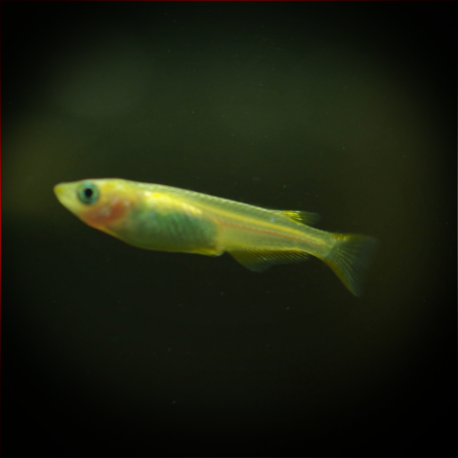More info
Datasheet
| Minimum Tank Size | 40 litres / 10.57 US gallons |
| Maximum Size | 3.6cm / 1.42inches |
| Temperature | 16°C / 60.80°F - 22°C / 71.60°F |
| Hardness | 5.04dgH / 90ppm - 25.04dgH / 447ppm |
| pH | 6.5-8.5 |
Behaviour:
Generally peaceful, the Medaka doesn't make an ideal addition to many communities due to specific environmental requirements. Best kept with diminutive species that enjoy similar conditions such as some Dermogenys, Pseudomugi, Brachygobius spp., and many neritid snails. Particularly, when breeding is intended, it should ideally be housed alone as hybridization risks with other Oryzias spp. have been proven in laboratory experiments. While it's mostly non-aggressive towards congeners, maintaining a group of 8 or more individuals enhances their effectiveness and confidence in behavior.
Aquarium Setup:
The Medaka thrives in a heavily planted tank with a dark substrate, patches of dense vegetation, and some open areas for swimming. Twisted roots, bogwood pieces, and surface vegetation are appreciated additions. Establishing the fish's origin is essential, as some populations prefer freshwater while others may need marine salt supplements. Water conditions should fall within a hardness range of 90-447ppm, a pH range of 6.5-8.5, and a temperature between 16-22°C (see table).
Feeding and Diet:
A micropredator by nature, the Medaka feeds on small insects, worms, crustaceans, and zooplankton in the wild. In captivity, they readily accept appropriately-sized dried foods but should be offered daily meals of small live and frozen fare like Daphnia, Artemia, bloodworms, along with quality flakes and granules.
Reproduction & Dimorphism:
Breeding the Medaka is relatively easy and prolific, with females producing batches of eggs regularly. Spawning occurs in the morning, with males darkening in color and defending territories against each other to attract females. Adhesive eggs are fertilized and left to hang from the female before being deposited among vegetation. Adult males exhibit elongated fin rays and distinctive bony structures, while females have a slightly rounder body shape and different fin characteristics.
Habitat and Distribution:
The Medaka is adaptable, found in a variety of habitats ranging from brackish mangrove swamps to freshwater streams and rice paddies. Distributed around the East and South China seas, southern Sea of Japan, and within regions of Laos, Vietnam, China, Taiwan, Korea, and Japan. Some populations previously identified as O. latipes may actually be O. sinensis in regions like mainland China, Laos, and Vietnam. Introduced to several countries outside its native range, including the United States and Russia, where it has invaded the Black Sea basin.

